





For landscapers, the most difficult garden to design is their own. On the other hand, a particularly challenging space can focus the mind. We visit garden designer Catriona Andrews‘ sloping city garden in Herne Hill, London, to see what lessons she has learned form reimagining a garden that had been used by the same family for 50 years:
Photography by Jim Powell for Gardenista.
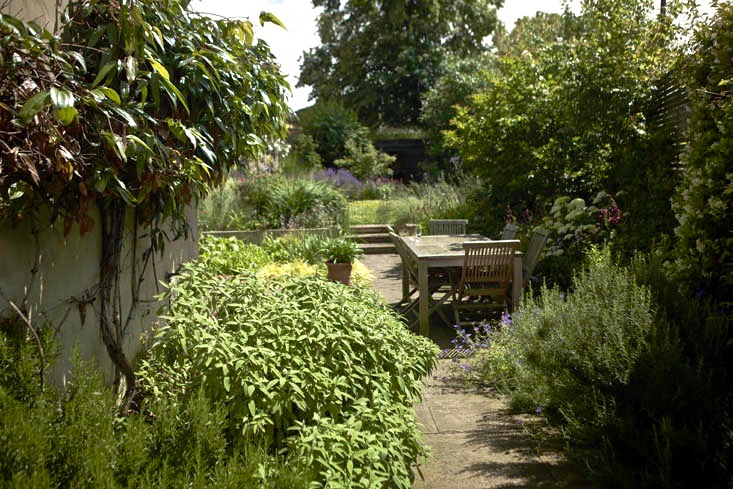
Above: Catriona’s garden is a parallelogram on a steep hill, sloping from left to right and down away from the house. The previous owners were clearly stumped by the topography. “It was neglected and uninspired,” says Catriona.
“We built a series of retaining walls, square to the house on the high side,” she continues. “This created different views from the kitchen (Above), the sitting room and side passage.”
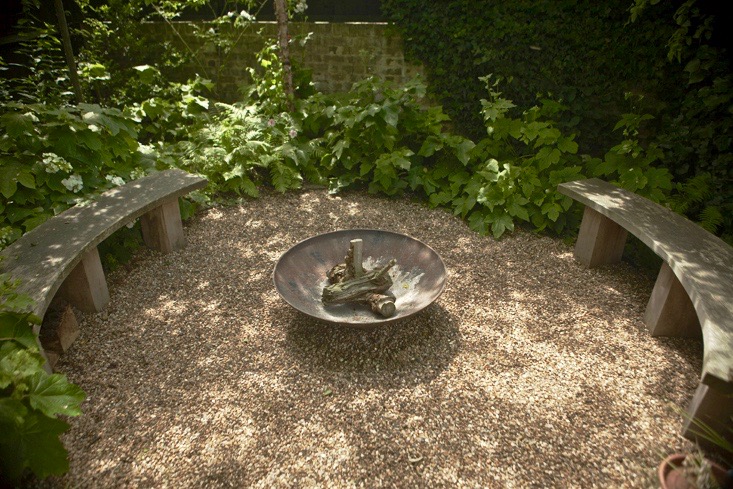
Above: With gravel underfoot, a woodland seating circle with a fire pit is at the rear of the Andrews’ garden.
Catriona converted the impossible slope into two levels, so that it could be used more easily. Within that, she created distinct spaces. “The fire pit area is great for teenagers,” says Catriona. “They can be apart from us and chat late into the night.”
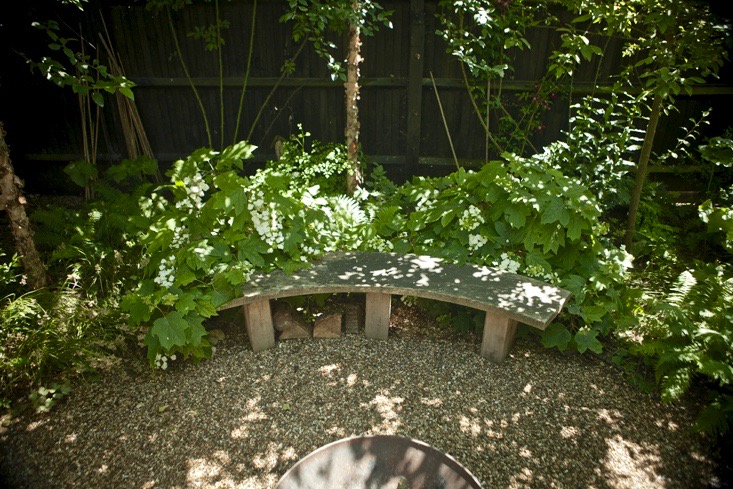
Above: Catriona was formerly part of the art department in film and tv work and her previous visual experience shows. Bespoke benches made by a friend are set against a backdrop of verticals provided by paper bark maples, Acer griseum.
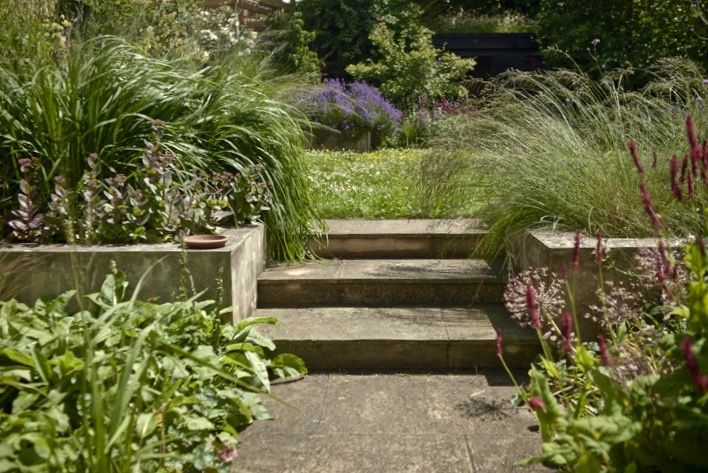
Above: “The terraces are essentially raised beds with well-drained soil,” says Catriona. “Drought-tolerant, mainly Mediterranean plants were chosen to cope with these conditions.”
The soil she found in the garden originally was difficult to work with: heavy London clay with a lot of rubble from World War II bomb damage. There was little top soil near the house so it would naturally become waterlogged if she didn’t work on improving it.
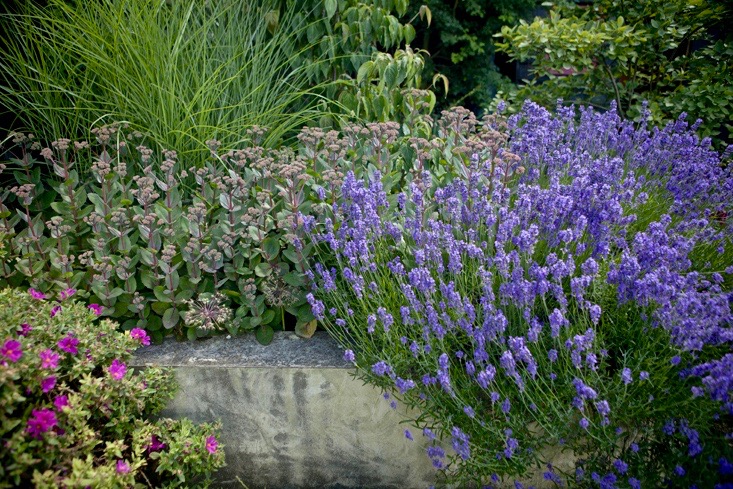
Above: From left, cistus, sedum and lavender are all drought tolerant.
“I try not to irrigate the garden besides the pots,” says Catriona. “The planting has to be able to survive when the weather is dry. London rainfall is erratic and very low, but I’ve found that mulching with stable manure or bark chips in the spring helps with moisture retention in the soil.”
Catriona collects rainwater in butts, though there are never enough. She waters in new plants well, and adds slow-release fertilizer in the autumn. Encouraging a good root system is hugely helpful for plants when the weather gets hot and dry.
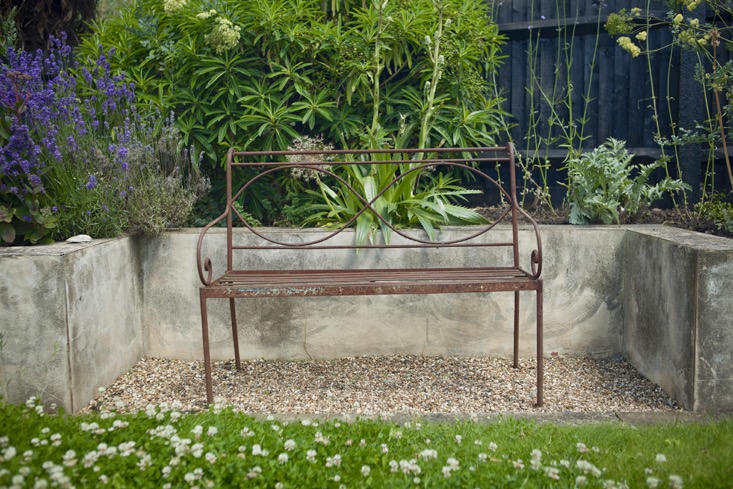
Above: Modular retaining walls are finished with buff-colored cement, to complement sandstone paving and gravel. Wooden fencing and outbuildings are painted black, with natural wood trellis atop brick walls.
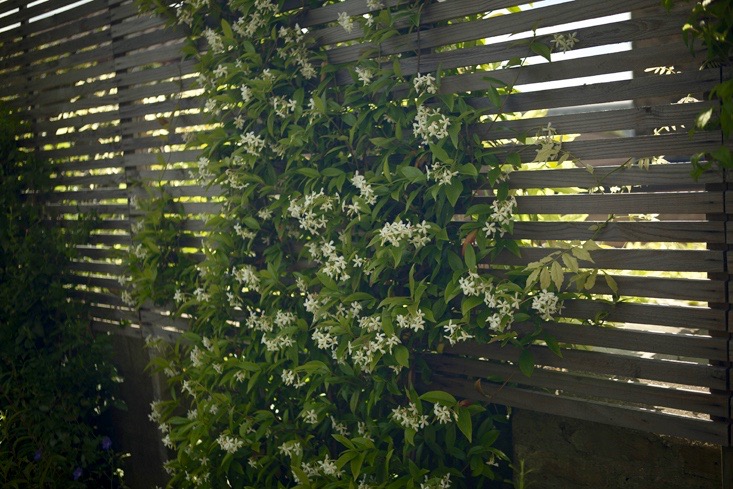
Above: Catriona uses Trachelospermum around the garden as a vertical covering, while trapping scent. Small trees provide cover for people as well as birds.
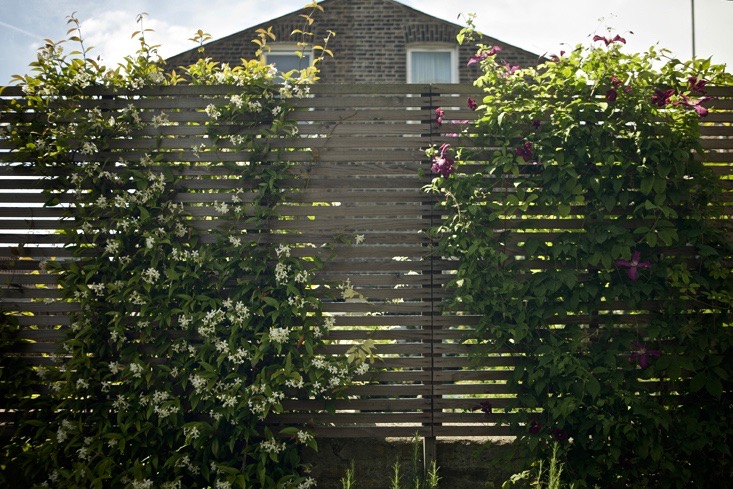
Above: Neat trellising supports neat yet floriferous climbers, Trachelospermum jasminoides and Clematis ‘Madame Julia Correvon’.
“Foxes and squirrels are very prolific in central London,” says Catriona. “We currently have a fox family cavorting in the garden at night, leaving scavenged rubbish and leaving holes in the beds.” It’s all part of life’s rich pageant.
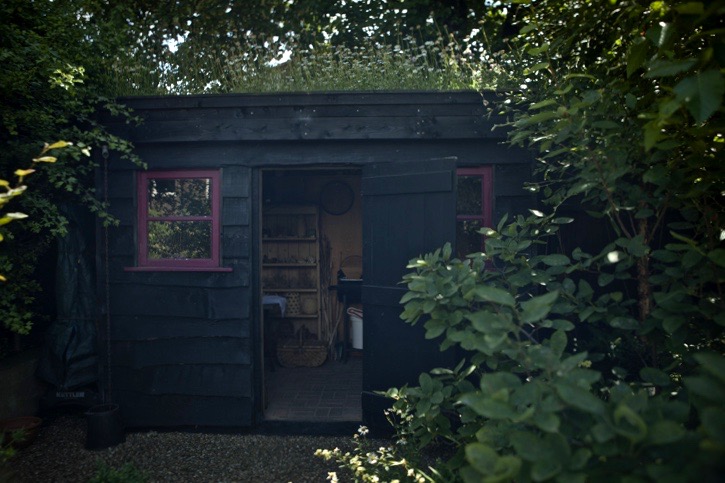
Above: “The garden has seating in the sun and shade,” says Catriona. “It’s varied and adaptable; all of it is well used.” The shed is a quiet hideaway, a pleasant way of staying outdoors even while it’s raining.
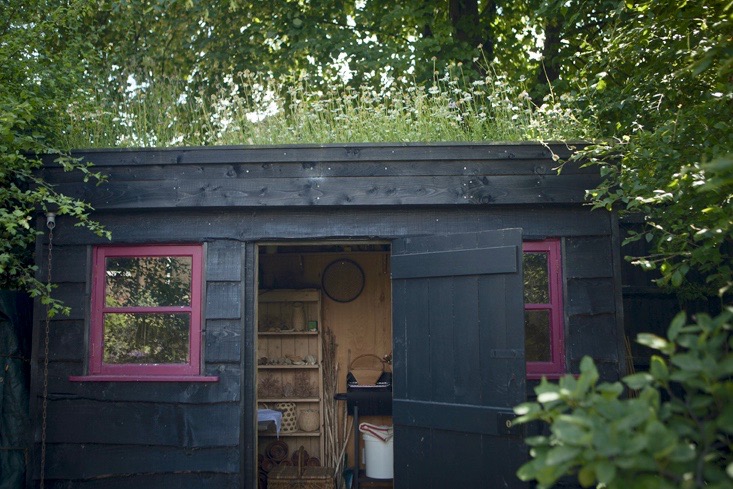
Above: The roof of the shed is a wildflower meadow, which adds color and movement to the view from upstairs while attracting wildlife, as does the pond.
“I love the varied planting areas, including the green roof. It’s fascinating to sit, listen, and watch,” says Catriona. “Nesting birds, fledglings, mating frogs and tadpoles, butterflies, moths, dragonflies, bats, and fox cubs all encourage a rich engagement with nature.”
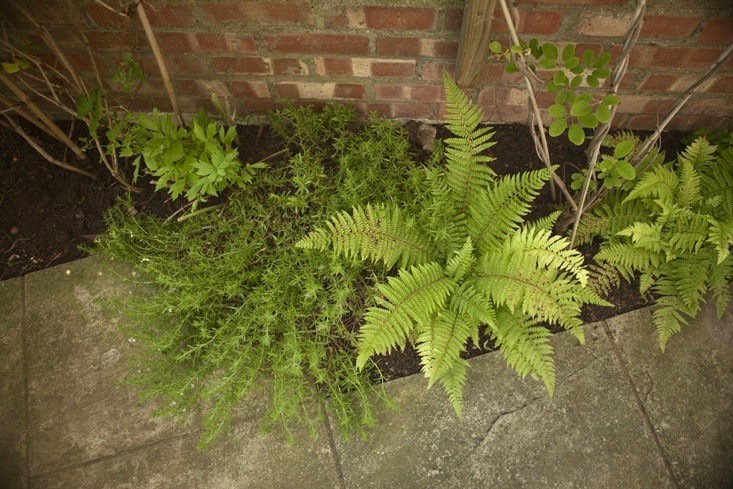
Above: Prostrate rosemary, ferns, and the chocolate vine Akebia quinata are not an obvious grouping but in this corner of the garden, they are happy.
“Choosing plant communities that should thrive in particular conditions is not a guarantee of success,” says Catriona. “There are so many varients to plant habitat and weather.”
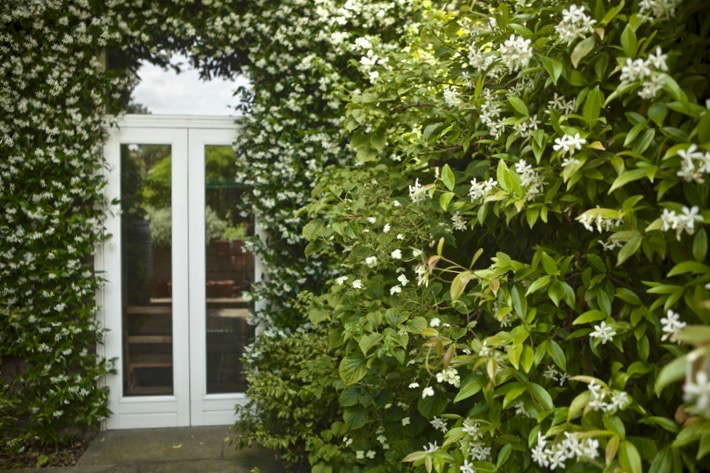
Above: The side passage, with scented walls of well-pruned Trachelospermum jasminoides.
“I love Nepeta (catmint) but the number of local cats means that it’s always destroyed, in a feline ecstasy,” says Catriona. Some of her plants are now reaching the end of their natural life. Lavender, achillea, and salvia all need replacing, after flowering away for from six to eight years.
For another installment of our new Lessons Learned series, see Lessons Learned: Salvaging a Garden from a Previous Remodel.
Copyright © www.100flowers.win Botanic Garden All Rights Reserved